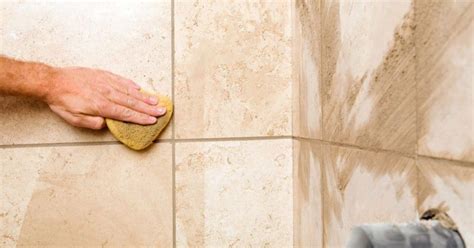Grout Drying Time: A Beginner's Guide
Grouting, that crucial final step in tiling projects, often leaves homeowners wondering: how long does grout take to dry? The answer isn't a simple number, as several factors influence the drying time. Understanding these factors is key to ensuring your beautiful new tile installation lasts. This beginner's guide breaks down everything you need to know about grout drying time, helping you avoid common mistakes and achieve a professional-looking finish.
How Long Does Grout Take to Dry?
The general rule of thumb is that grout needs 24-72 hours to dry to the touch. However, this is just a starting point. Complete curing, meaning the grout has reached its full strength and water resistance, can take several days, or even weeks, depending on several critical factors.
Factors Affecting Grout Drying Time
Several factors influence how long your grout takes to dry completely:
1. Type of Grout:
- Cement-based grout: This is the most common type and generally takes longer to dry, often needing the full 72 hours or more.
- Epoxy grout: This type dries much faster, often within 24 hours, but requires more specialized application techniques.
- Sanded grout: Sanded grout, containing sand for added strength, usually dries slightly slower than unsanded grout.
2. Thickness of Grout Joints:
Thicker grout joints take longer to dry than thinner ones. Ensure you maintain consistent grout joint width throughout your project for even drying.
3. Ambient Temperature and Humidity:
High temperatures and low humidity accelerate drying, while low temperatures and high humidity slow it down considerably. Avoid grouting in excessively hot or cold conditions.
4. Ventilation:
Good ventilation is crucial. Proper airflow helps to evaporate moisture from the grout, speeding up the drying process. Open windows and use fans if necessary.
5. Porosity of the Tiles:
Highly porous tiles absorb more moisture, potentially slowing down the grout drying process.
6. Amount of Water Used During Application:
Using too much water while mixing or applying the grout can significantly prolong drying time and potentially weaken the grout. Follow the manufacturer's instructions carefully.
What Happens if Grout Dries Too Quickly?
Grout that dries too quickly can crack or become brittle, compromising its durability and water resistance. This often occurs in hot, dry conditions or with poor ventilation.
What Happens if Grout Dries Too Slowly?
Grout that dries too slowly may remain vulnerable to mildew and mold growth, especially in damp areas like bathrooms. This is more likely in humid environments or with poor ventilation.
How to Check if Grout is Dry:
Don't rely solely on the time elapsed. The best way to check if your grout is dry is to gently touch it. If it's firm and doesn't leave a residue on your finger, it's likely dry enough for light foot traffic. However, wait the full recommended curing time before subjecting the tiles to heavy use or water exposure.
When Can I Use My Tiles After Grouting?
While the grout might feel dry to the touch after 24-72 hours, it's crucial to allow for the full curing time specified by the grout manufacturer – typically 7-14 days or even longer for larger projects. This ensures the grout achieves its full strength and water resistance. Avoid heavy use or exposure to water during this curing period.
Can I Speed Up Grout Drying Time?
While you can improve ventilation and control temperature to some extent, artificially speeding up the drying process can be detrimental to the grout's integrity. Patience is key to achieving a durable, long-lasting finish.
This guide should give you a clearer understanding of grout drying time. Remember always to consult the manufacturer’s instructions for your specific grout product for the most accurate information. Following these guidelines will help you ensure your tiling project is a success.

